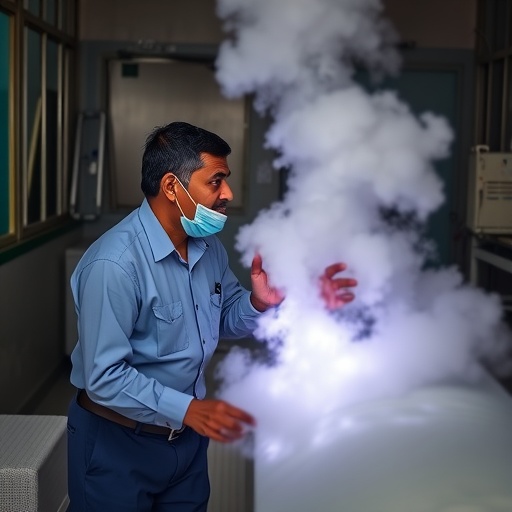MINNEAPOLIS – The eyes may be a window to the brain for people with early Parkinson's disease. People with the disease gradually lose brain cells that produce dopamine, a substance that helps control movement. Now a new study has found that the thinning of the retina, the lining of nerve cells in the back of the eye, is linked to the loss of such brain cells. The study is published in the August 15, 2018, online issue of Neurology®, the medical journal of the American Academy of Neurology.
"Our study is the first to show a link between the thinning of the retina and a known sign of the progression of the disease — the loss of brain cells that produce dopamine," said study author Jee-Young Lee, MD, PhD, of the Seoul Metropolitan Government – Seoul National University Boramae Medical Center in South Korea. "We also found the thinner the retina, the greater the severity of disease. These discoveries may mean that neurologists may eventually be able to use a simple eye scan to detect Parkinson's disease in its earliest stages, before problems with movement begin."
The study involved 49 people with an average age of 69 who were diagnosed with Parkinson's disease an average of two years earlier but who had not yet started medication. They were compared to 54 people without the disease who were matched for age.
Researchers evaluated each study participant with a complete eye exam as well as high-resolution eye scans that use light waves to take pictures of each layer of the retina. In addition, 28 of the participants with Parkinson's disease also had dopamine transporter positron emission tomography (PET) imaging to measure the density of dopamine-producing cells in the brain.
Researchers found retina thinning, most notably in the two inner layers of the five layers of the retina, in those with Parkinson's disease. For example, for those with Parkinson's disease, the inner most layer of the retina in one section of the eye had an average thickness of 35 micrometers (μm) compared to an average thickness of 37 μm for those without the disease.
In addition, the thinning of the retina corresponded with the loss of brain cells that produce dopamine. It also corresponded with the severity of disease. When disability from the disease is measured on a scale of one to five, the people with the most thinning of the retina, or thickness of less than 30 μm, had average scores of slightly over two, while people with the least thinning, or thickness of about 47 μm, had average scores of about 1.5.
"Larger studies are needed to confirm our findings and to determine just why retina thinning and the loss of dopamine-producing cells are linked," said Lee. "If confirmed, retina scans may not only allow earlier treatment of Parkinson's disease but more precise monitoring of treatments that could slow progression of the disease as well."
A limitation of the study was that the retina scans focused only on a limited area of the retina. The study was also a snapshot in time and did not follow participants over a long period of time.
###
The study was supported by the Seoul Metropolitan Government – Seoul National University Boramae Medical Center and the Korean Ministry of Education, Science and Technology.
Learn more about Parkinson's disease at http://www.BrainandLife.org, the American Academy of Neurology's free patient and caregiver magazine and website focused on the intersection of neurologic disease and brain health. Follow Brain & LifeTM on Facebook, Twitter and Instagram.
The American Academy of Neurology is the world's largest association of neurologists and neuroscience professionals, with over 34,000 members. The AAN is dedicated to promoting the highest quality patient-centered neurologic care. A neurologist is a doctor with specialized training in diagnosing, treating and managing disorders of the brain and nervous system such as Alzheimer's disease, stroke, migraine, multiple sclerosis, concussion, Parkinson's disease and epilepsy.
For more information about the American Academy of Neurology, visit http://www.aan.com or find us on Facebook, Twitter, Instagram, LinkedIn and YouTube.
Media Contact
Renee Tessman
[email protected]
612-928-6137
@GreenJournal
http://aan.com/AAN-Resources/Details/press-room




